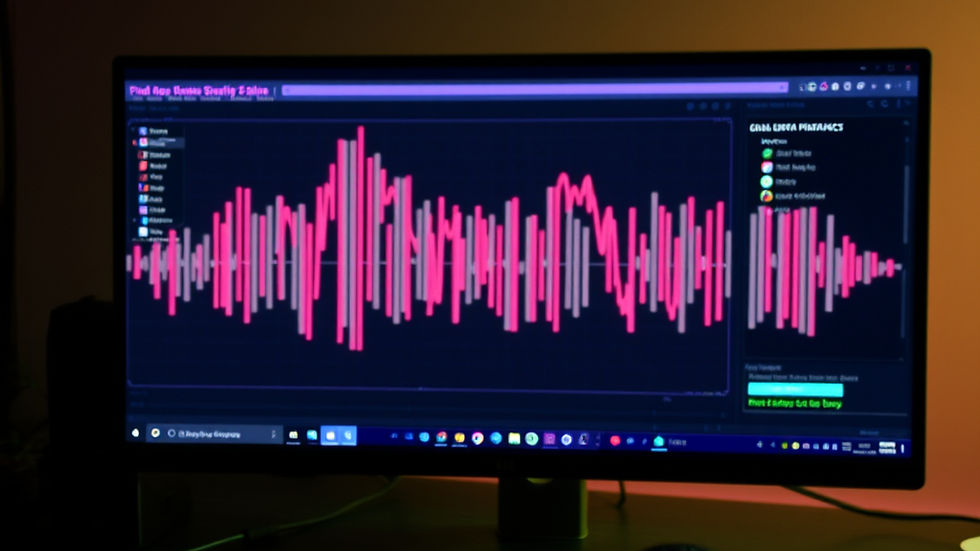Sound Engineering: 10 Awesome Mixing Tips & Best Practices For Beginners
- Teacher Nine

- Aug 2, 2024
- 4 min read
Updated: Jun 15

10 Mixing Tips Every Beginner Needs (And Pros Forget)
Being a great audio engineer ain’t just about stacking plugins and scrolling presets. It’s about discipline, trained ears, and putting in those unglamorous hours behind the board. You don’t magically wake up with golden ears and perfect mixes. It takes time, repetition, and a mindset that’s equal parts artist and technician. Whether you’re working from a high-end studio or building bangers from your bedroom, how you approach the craft makes all the difference.
If you’re out here searching for audio mixing tips, sound mixing tips, or a real beginner mixing guide, you’re in the right place. These aren’t just cookie-cutter hacks — they’re battle-tested habits that separate clean, professional mixes from muddy messes. Whether you're still figuring out how to mix music or looking to sharpen your home studio mixing game, every tip here will help you level up. Because the difference between a decent mix and a standout one? It’s usually in the details.
So if you're serious about getting your mixes tighter, punchier, and more polished — and you’re ready to learn how to be a better audio engineer — then keep reading. This is where music production tips meet real-world workflow.
Let’s get it:
“10 Sound Mixing Tips That'll Take Your Tracks From Meh to Magic”
1. Mix With Fresh Ears, Not Fried Ones
Still up at 3AM tweaking hi-hats after a 10-hour session? You’re not mixing — you’re sabotaging yourself.
Your ears get tired. Your brain gets foggy. And suddenly, everything sounds “fine” when it’s actually falling apart. Think of your ears like athletes — they need rest to perform. No breaks = bad takes.
Solution: Step away. Hydrate. Sleep. Reset. Then come back and hear the mix for real.
2. Feed the Mind That Feeds the Mix
Mixing on an empty stomach? That’s a rookie move.
Your brain and ears need more than caffeine and vibes. You’re making creative decisions that need energy and clarity. And let’s be real — nobody mixes well when they’re hangry.
Eat something real. Get some greens. Slam a smoothie. Fuel the mix, or fall off.
3. Chill With the Compression
Compression is a tool — not a hammer. If your waveform looks like a brick of cheese, you’re doing too much.
Let your mix breathe. Keep those natural peaks and dips. Over-compressing sucks the soul outta your sound. You want energy, not a flat tire.
Balance it — don’t squash it.
4. Live With the Mix
One-day mixes rarely age well. What sounds hot today might sound trash tomorrow.
Take your time. Revisit your mix over a few days. Your ear changes. Your vibe changes. Good mixes evolve. Let the track breathe and grow — then lock it in.
5. Mix in Mono, Then Make It Pop in Stereo
Stereo can lie to you. It spreads things out and adds a shine that hides the flaws.
Mono is raw. It tells the truth. If your mix holds up in mono, it’ll slap even harder in stereo. Plus, not every system out there is stereo — your mix still needs to hit in a busted car speaker or on a phone.
Start simple. Then go wide.

6. Turn It Down
Loud mixes can fool you. Everything sounds “better” cranked — even when it’s not.
Mix at a moderate volume. That’s where the real flaws live. Once it sounds clean low, then crank it and test how it holds.
If it bangs at both levels, you're golden.
7. Fix the Damn Thing
You hear it. That tiny glitch. That annoying pop. That vocal that’s juuuust off.
You know it needs to be fixed... but you leave it. “It’s not that bad,” you tell yourself.
That’s lazy. Don’t be lazy.
Fix every little thing that bugs you. It’ll haunt you otherwise. Great mixes are made in the details.
8. Let the Song Lead
Every track is its own world. Don’t force tricks that don’t fit.
Just listen. If the drums feel weak, beef them up. If the vocal’s muddy, clean it. If an effect sounds cool but clashes — lose it.
Let the music tell you what it needs. Don’t overthink. Don’t overdo. The best engineers know when to leave stuff alone.
9. Get Organized or Get Buried
50 tracks. No labels. No buses. No color-coding. Sound familiar?
That’s chaos — not workflow.
Start right. Label your tracks. Group your elements. Color-code the session. Learn buses. Be able to find anything in seconds. It’s not just about being neat — it’s about being efficient.
Organization = control. Control = cleaner mixes.
10. Reference Like a Pro
You’re not copying — you’re studying.
Pull up a professionally mixed track in a similar genre. A/B it with your mix. How’s your low end? Where’s the vocal sitting? How wide is the stereo field?
Learn from the best. Borrow techniques. Train your ear. The more you reference, the better your instincts get.
Even masters stay students.
Whether you’re just starting out or been at it for years, these habits separate average from elite. Mixing isn’t just skill — it’s mindset. Stay sharp, stay hungry, and keep growing.
Got your own mixing commandments? Drop ‘em. Let’s build.




Comments